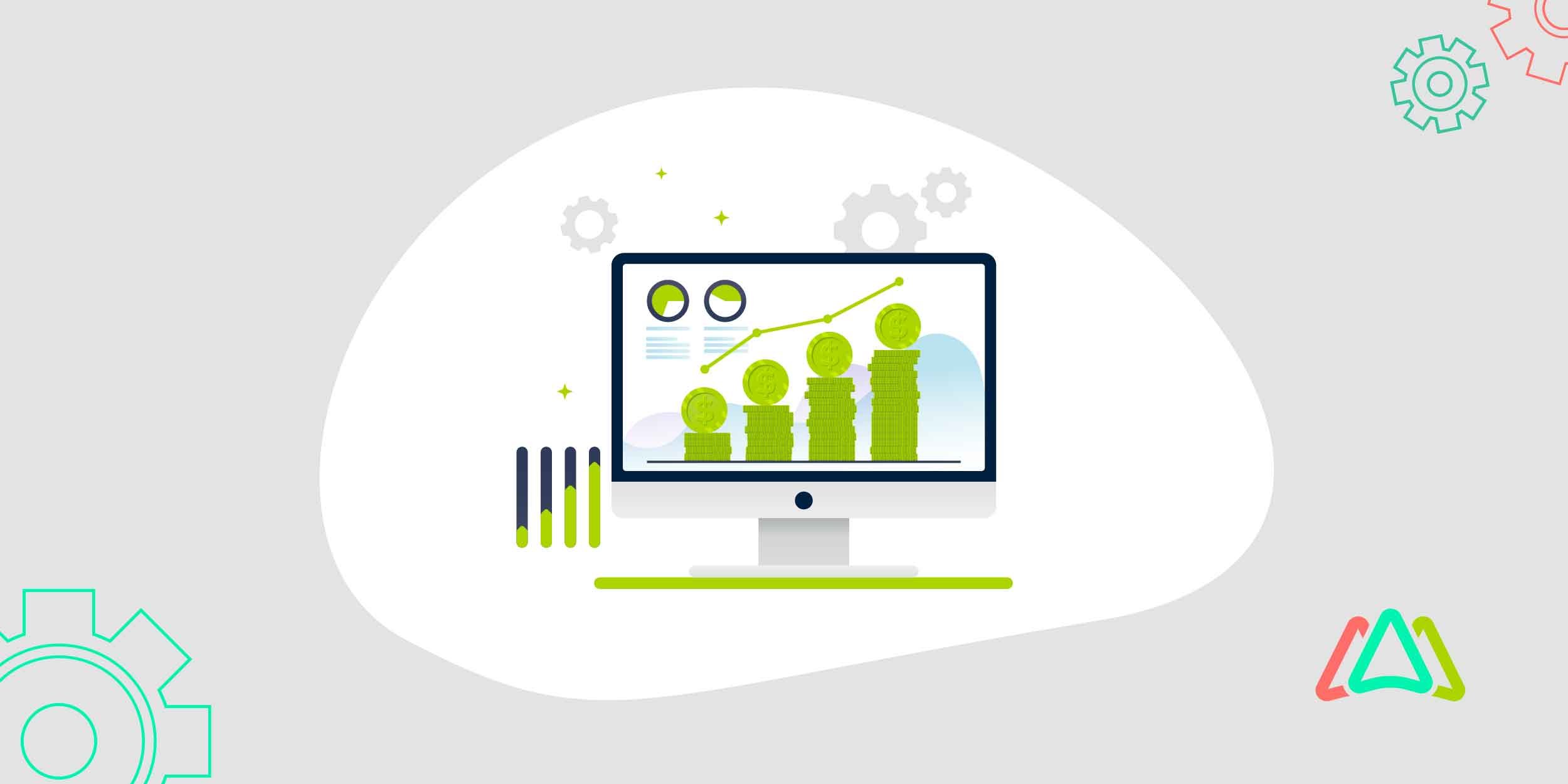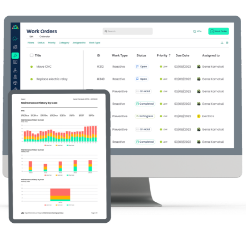
Compare CMMS Software for Long-Term Value: Total Cost, Scalability & Support
Selecting a Computerized Maintenance Management System (CMMS) can, at first glance, be an ominous experience. But it needn’t be if you use a search strategy that gets you the CMMS solution that actually meshes its features with your organization’s long-term needs and goals. This article goes beyond a simple “top 5 CMMS Software” list to show facility and maintenance leaders how to compare CMMS software through a value-based lens, with the goal of helping buyers make a decision that supports not just organizations’ maintenance needs today, but also supports business growth into the future.
Starting With Some Context
Organizations that decide to acquire a CMMS understand that the software will provide operational benefits that drive team productivity, compliance, and asset longevity. However, with so many options available in the CMMS marketplace, it is easy to get swept up in the range of features and price points being offered by vendors. This generally happens when organizations decide to compare CMMS software, and the conversation starts—and ends—with a checklist of features or the lowest subscription price. While those details matter, they rarely tell the whole story of how a CMMS will perform over the long run. This is the piece that is missing. The result is that buyers frequently choose a system that appears affordable now but could become costly tomorrow if it lacks scalability, requires frequent manual workarounds, or offers limited customer support.
To find the right CMMS, assessing pricing and functionality are important. But the approach to evaluating various CMMS platforms should also focus on understanding how the total cost of ownership (TCO), scalability, and vendor support align with your organization’s long-term goals.
The Real Cost of CMMS: Beyond the Annual Subscription Fees
When companies set out to compare CMMS software, cost generally takes center stage. Yet the subscription fee you see on a vendor’s pricing page is only one piece of the puzzle. A truly cost-effective CMMS isn’t necessarily the cheapest upfront — it’s the one that delivers the most significant return over time with minimal hidden costs.
Understanding Total Cost of Ownership (TCO)
The total cost of ownership for CMMS software extends beyond the monthly or annual license fee. It also includes implementation, training, customization, and ongoing maintenance. Depending on the CMMS solution selected, some systems require extensive setup or additional integrations, which can quickly inflate the original cost proposal.
Hidden Costs to Watch For
Implementation and Data Migration involve importing historical maintenance data, which can be labor-intensive. Some vendors charge per hour or per dataset. Many CMMS software solutions include import wizards, which allow the customer to import data without the assistance of the CMMS provider. Some tech-savvy users will take on migrating and importing their data on their own to save on implementation costs, while others will lean on the CMMS provider for onboarding assistance to ensure that the initial implementation goes well.
User Training is a critical part of CMMS adoption. Without proper onboarding, adoption rates drop, leading to inefficiency and lost productivity. CMMS providers offer a range of training services. Most training is included in the onboarding package and delivered remotely through virtual meetings using applications like Zoom or Microsoft Teams. It is always advised to invest in user training to ensure user adoption is maximized and CMMS buyers get the most value out of their investment as quickly as possible. Fees for training are usually bundled into the onboarding plan. Remote training via video conference is a lot less costly than on-site training, which involves hotel, airfare, car rental, and sometimes meals, in addition to the training fees. Check out our article comparing the pros and cons of onsite vs. remote training.
Customization tailors a CMMS to an organization’s operations. Systems that require third-party developers to configure workflows or reports can become expensive to maintain. Most modern CMMS platforms have flexible configuration settings that can be easily set, rather than having to “customize”. With the surge in SaaS (software as a service) CMMS platforms, the need for customization has shifted toward configuring settings already built into the CMMS application. This comes at a much lower cost, and usually, the CMMS vendor can help support this during the initial onboarding and implementation.
Downtime During Transition is a factor that needs to be considered. Every hour, your maintenance team can’t access system data, and organizations pay the price for delayed work and reactive repairs. If you are transitioning from one CMMS or similar platform to another, be sure to inquire about services that allow your organization to extract and capture the data and time of the extract. Once the data is imported, make sure you can capture and extract the data for the interval of time between the last export and the present time. This will allow you to have a more seamless migration, capturing all work orders and activities. Note, these migration services often come at a cost in the form of professional service fees.
Why a Long-Term View Matters
When organizations compare CMMS software solely on cost, it is like buying a car based solely on its sticker price. A car purchase should consider fuel economy, reliability, or maintenance costs. The same logic applies to purchasing a CMMS. A higher-priced CMMS with strong user adoption, reliable uptime, and excellent support can often cost less over its lifecycle.
When it comes to evaluating vendors, consider asking them the following:
What’s included in the base price?
Are there extra fees for implementation, users, or modules?
How often are updates released — and are they included?
Find out exactly what is included in the price and what add-ons will cost; additional modules, future training and migration services, annual price increases, additional users, integration fees.
By calculating the total cost of ownership rather than initial recurring fees, organizations can avoid unanticipated surprises and choose a system that offers sustained financial and operational value.
Scalability
When companies compare CMMS software, scalability is often overlooked, even though it’s one of the most critical factors in assessing whether your system will remain useful as your organization grows. Scalability refers to how well a CMMS can handle growth by managing more users, assets, locations, and data. A scalable CMMS adapts to your business needs rather than forcing you to adjust your operations to accommodate system limitations. This is most relevant when companies merge, expand into new facilities, or adopt new technologies. Scalability is what protects your CMMS investment from early obsolescence.
A scalable CMMS provides flexible licensing, modular functionality, and a cloud-based environment that can grow with your operations. Cloud CMMS platforms, in particular, make scaling easier because they don’t rely on local servers or IT infrastructure. Adding new users, integrating additional equipment data, or connecting new sites can be done quickly. In contrast, on-premise systems often require costly upgrades or reinstallation as capacity grows. By evaluating how each vendor supports growth, you can gain insight into how well it can help your long-term maintenance strategy.

Scalability involves more than system capacity; it’s also about flexibility and integration. As organizations adopt IoT sensors, predictive maintenance tools, and AI-driven analytics, a scalable CMMS should accommodate and integrate these technologies. This interoperability ensures you don’t need to replace your software every time you modernize your operations. Also consider how the platform manages data across multiple departments or sites. The best CMMS for scalability is one that can centralize information while allowing local control.
Ultimately, scalability directly impacts your return on investment. A CMMS that grows with your organization minimizes disruption and the need for additional software purchases, ensuring consistent workflows and data continuity. It also improves collaboration among teams and departments, which becomes increasingly vital as operations expand. When you compare CMMS software, look beyond your immediate needs by asking: “Will this system still serve us effectively in three, five, or even ten years?”
Vendor Support
When organizations compare CMMS software, they often focus on features, pricing, and integration — but overlook one factor that can make or break their success: vendor support. A CMMS is not a standalone system. It requires ongoing updates, training, and troubleshooting to keep operations running smoothly. The level of support you receive after purchase will directly affect user adoption, long-term system performance, and ultimately, the return on your investment. A vendor’s responsiveness and commitment to their customers often reveal more about the product’s real value than any technical specification.
High-quality CMMS customer support goes beyond a basic help desk. It includes dedicated account management, regular training sessions, and proactive communication about new updates or best practices. The best vendors understand that every business has unique workflows and resource challenges. They should offer multiple support channels — such as live chat, phone, email, and a knowledge base. Offering these will ensure that help is always accessible when and in the way maintenance teams need it most. Some vendors even provide onboarding specialists who can guide teams through implementation, ensuring smooth data migration and early adoption success. This level of partnership helps prevent the under- or ineffective use of a CMMS.
Vendor support also influences system uptime and user satisfaction. When a maintenance team encounters an issue that impacts work orders or asset tracking, a quick response from the vendor can mean the difference between a minor inconvenience and costly downtime. Reliable CMMS providers continuously monitor system performance, issue timely patches, and communicate transparently about updates or potential issues. This kind of partnership builds trust — an often-overlooked but vital component in achieving consistent maintenance operations.
When evaluating CMMS vendors, it’s important to look beyond marketing promises. Ask for customer testimonials or case studies highlighting real support experiences. Inquire about average response times, training resources, and the availability of ongoing education or certification programs. By prioritizing support in your comparison process, you’ll be in a better position to select a partner who contributes to your success, not just a provider who sells you software.
Comparing CMMS Software Using a Value-Based Framework
After identifying the key pillars of cost, scalability, and vendor support, the next step is to bring them together strategically to inform the decision. Too often, organizations rely on superficial comparisons — such as “feature counts” or “top vendor lists” — which can lead to mismatched expectations and poor adoption. Using a value-based framework will help you compare CMMS software using metrics that directly influence operational success and long-term ROI. Rather than focusing on what looks good on paper, this method makes it possible to evaluate how each system aligns with your strategic goals, resources, and plans.
A simple yet effective way to apply this approach is to use a three-pillar evaluation model: Total Cost of Ownership (TCO), Scalability, and Support Quality. Start by assigning weights to each pillar based on your organization’s priorities — for example, 40% to cost, 35% to scalability, and 25% to support. Then, score each vendor on a consistent scale (1–5 or 1–10) using measurable criteria. Under cost, you might assess subscription fees, setup expenses, and training costs. For scalability, consider whether the system can accommodate more users, assets, or integrations without performance drops. Under support, evaluate response time, onboarding quality, and post-sale assistance. This structured scoring system removes guesswork and bias from the comparison process.
A value-based framework also helps ensure cross-departmental alignment. CMMS decisions affect not only maintenance teams but also finance, IT, and operations. By scoring vendors based on shared priorities, decision-makers across departments can determine which systems best meet the organization's overall goals.
Finally, documenting your comparison process builds accountability and provides a clear rationale for your final selection. By focusing on long-term value rather than short-term convenience, you can ensure that you have chosen a system that strengthens operational resilience, minimizes risk, and supports continuous improvement. This disciplined approach transforms the process of comparing CMMS software from a checklist exercise into a strategic and sound business decision.
Conclusion
Choosing a CMMS involves much more than finding the software with the most impressive feature list or the lowest subscription fee. Instead, it’s about selecting a long-term solution that aligns with your organization’s goals, resources, and growth trajectory. When you compare CMMS software through the lens of total cost of ownership, scalability, and vendor support, surface-level comparisons give way to decisions that deliver sustainable results. A system that adapts to your evolving needs, integrates smoothly with other technologies, and comes backed by a responsive support team will yield far greater value over time than one chosen solely for its upfront affordability.
The real success of a CMMS lies in how well it guides your daily operations and contributes to continuous improvement. The right software should simplify asset tracking, streamline preventive maintenance, and provide actionable insights that help reduce downtime and extend equipment life. These outcomes only materialize when the system is well-implemented, adequately supported, and scalable as your business grows. By viewing your CMMS as an ongoing investment rather than a one-time purchase, you ensure that it continues to pay dividends in efficiency, reliability, and cost control.
Keep in mind that every organization’s priorities are different. A manufacturer with multiple plants may prioritize scalability, while a small facility management team might focus on ease of use and reliable vendor support. The key is to define your operational goals first, then compare CMMS software using a structured framework that reflects those priorities. This ensures that your choice is tailored to your organization’s current needs and future ambitions.
Comparing CMMS software is about building a foundation for sustainable success. When cost, scalability, and support are considered, you’ll be investing in a long-term partnership that strengthens your maintenance culture, empowers your team, and keeps your assets performing at their best. By doing so, you will also position your organization to gain the full strategic advantage of modern maintenance technology.
Check out these lists of top CMMS providers;
Best CMMS for facilities management
Top 5 Most Affordable CMMS
Top 5 CMMS for Manufacturing
TABLE OF CONTENTS
Keep Reading
The longest U.S. federal government shutdown to date lasted 43 days, beginning on October 1, ...
5 Dec 2025
Every maintenance professional faces it sooner or later — that critical time when an aging ...
18 Nov 2025
The term 'best' is often used loosely, without a clear understanding of its context or ...
14 Nov 2025
In the not too distant past, maintenance strategies have been defined by reaction—fixing ...
13 Nov 2025
Tax season is the time of year that often sends a ripple of anxiety through many of us. The ...
11 Nov 2025
In healthcare facilities, equipment uptime involves more than achieving operational ...
31 Oct 2025
Companies are subject to economic ups and downs, also known as economic volatility. Today, ...
30 Oct 2025
Maintenance challenges are a constant struggle, with unplanned downtime costing manufacturers ...
27 Oct 2025
Last winter, a maintenance technician at a U.S. paper mill ignored a predictive alert that ...
10 Oct 2025
Many organizations proudly say they “have a CMMS,” but ownership alone doesn’t equal ...
9 Oct 2025
Every maintenance team is under pressure to do more with less. Unplanned downtime is often ...
7 Oct 2025
The implementation of simple, yet powerfully effective, checklists has repeatedly ...
3 Oct 2025
In manufacturing, every second counts. When production stops, whether due to scheduled ...
2 Oct 2025
The increasing cost of maintenance, lack of accountability, and siloed systems leave many ...
30 Sep 2025
Preventive maintenance is one of those things maintenance teams know they need to do, but it ...
26 Sep 2025
Public services are essential to daily life. The provision of safe roads, functional transit, ...
25 Sep 2025
For most manufacturing facilities, a major focus of their maintenance teams revolves around ...
24 Sep 2025
Have you ever tried explaining to the CEO why the production line has been down for hours ...
18 Sep 2025
Over the past few decades, the hotel industry has undergone a dramatic transformation. ...
16 Sep 2025
Profitability is at the top of the list for manufacturing organizations when conversations ...
12 Sep 2025






